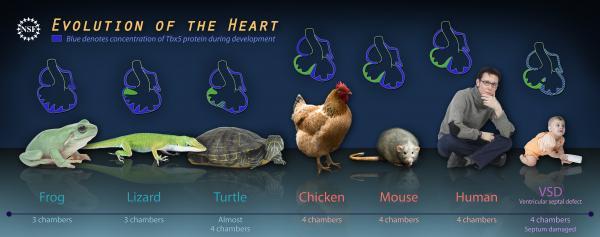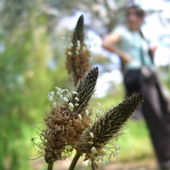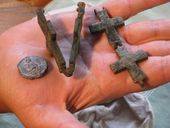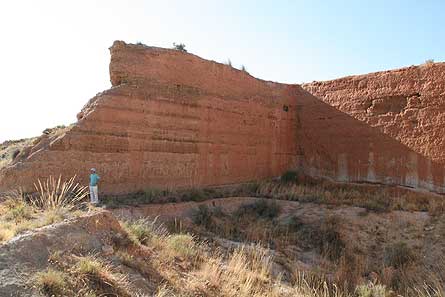
© Credit: Zina Deretsky, National Science Foundation after Benoit Brueau, the Gladstone Institute of Cardiovascular DiseaseEmbryo hearts show evolution of the heart from a three-chambered in frogs to a four-chambered in mammals.
Scientists at the Gladstone Institute of Cardiovascular Disease (GICD) have traced the evolution of the four-chambered human heart to a common genetic factor linked to the development of hearts in turtles and other reptiles.
The research, published in the September 3 issue of the journal
Nature, shows how a specific protein that turns on genes is involved in heart formation in turtles, lizards and humans.
"This is the first genetic link to the evolution of two, rather than one, pumping chamber in the heart, which is a key event in the evolution of becoming warm-blooded," said Gladstone investigator Benoit Bruneau, PhD, who led the study. "The gene involved, Tbx5, is also implicated in human congenital heart disease, so our results also bring insight into human disease."
From an evolutionary standpoint, the reptiles occupy a critical point in heart evolution.





Comment: Presumably the reverse is just as feasible. The military-industrial complex has no doubt thought of many other applications for this technology.